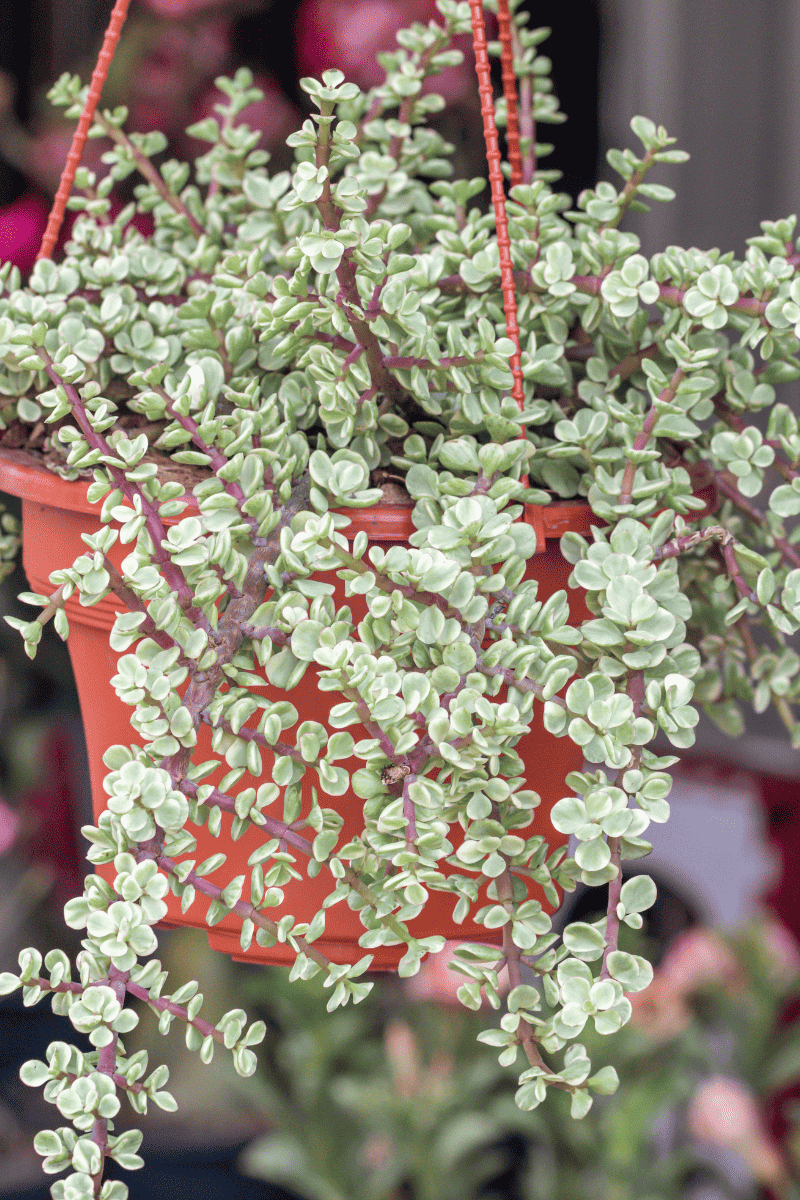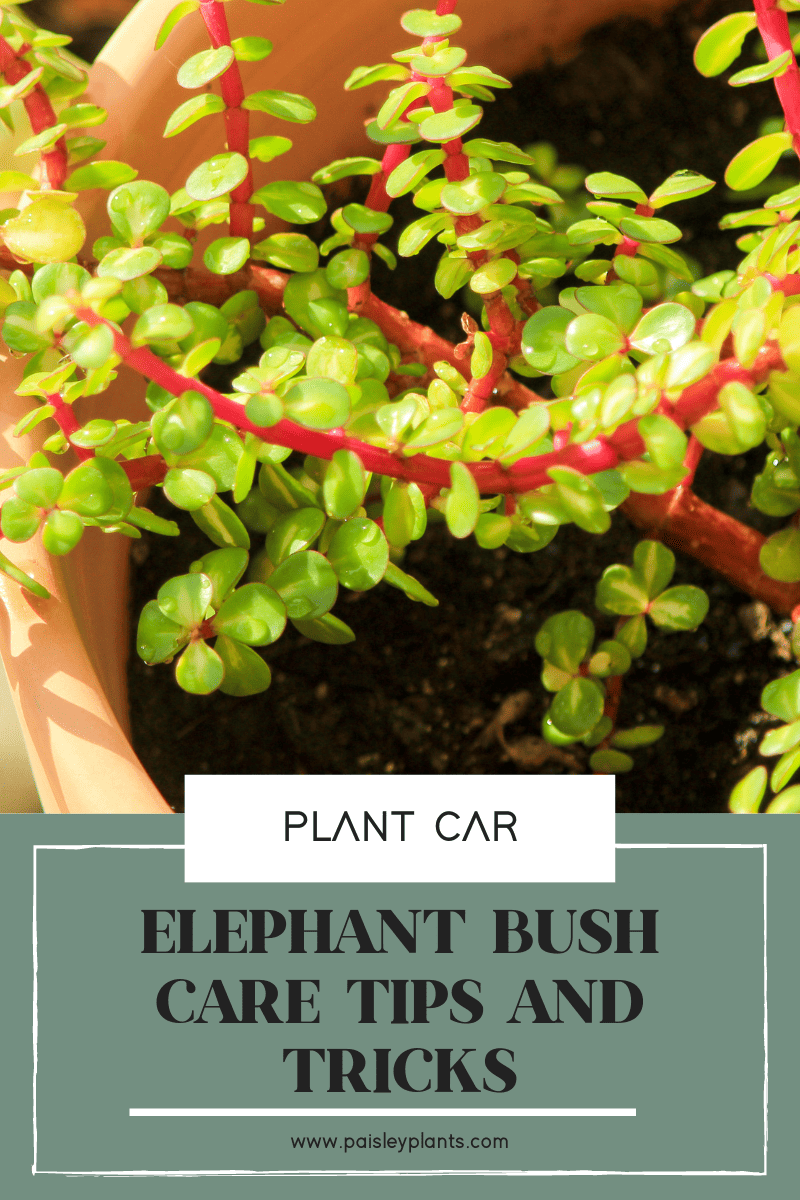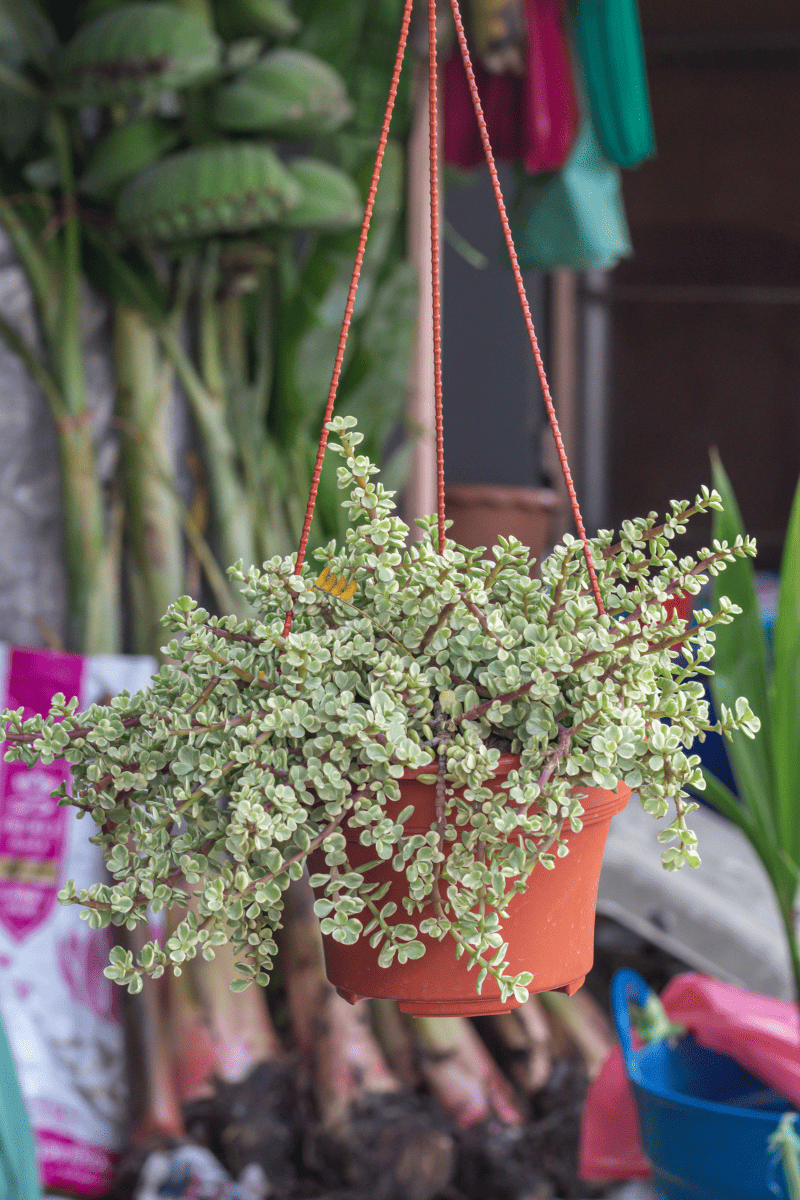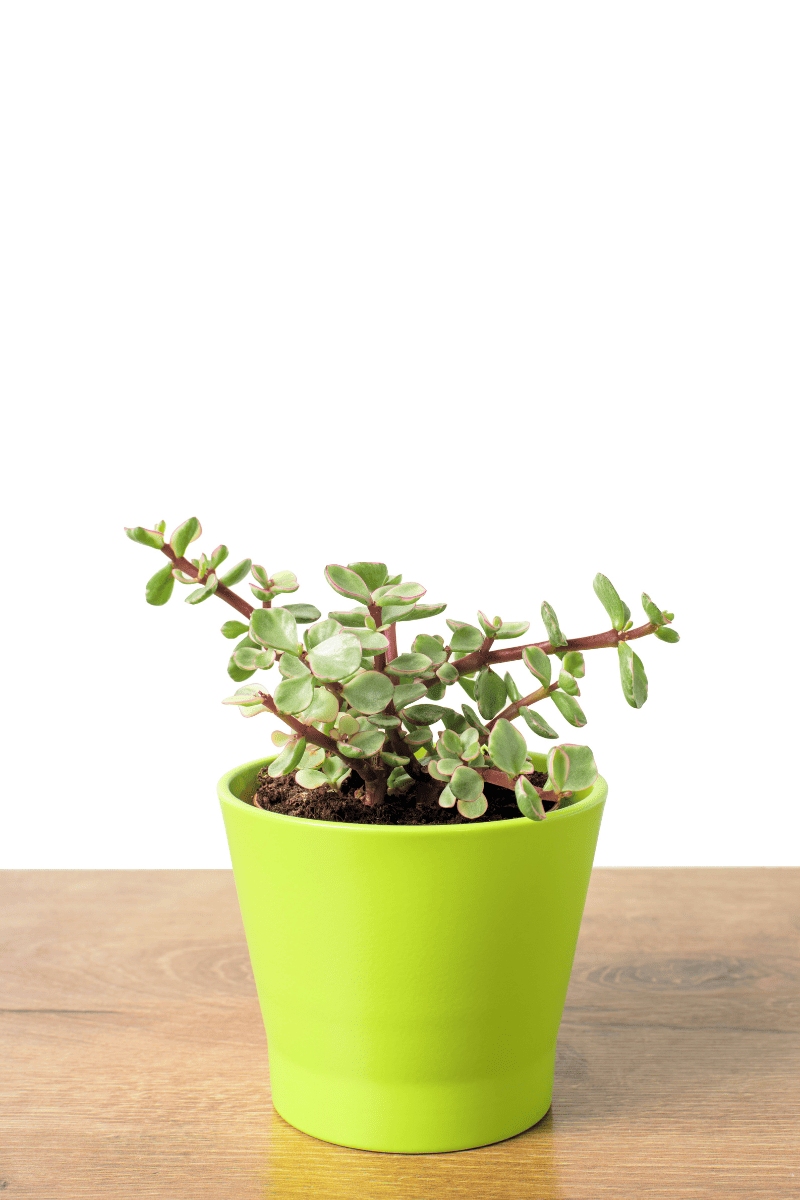The Elephant Bush (Portulacaria afra) has become a very popular succulent to grow in gardens and as houseplants all over the world. Believe it or not, it is a favorite food for elephants in South Africa!
Yes, the Elephant Bush is actually elephant food! They tend to eat the leaves of the plant and leave the lower spreading branches, which later root and grow more plants!
Table of Contents
Elephant Bush History
This plant is also used as an edible in South African cuisine which is added to salads, soups and stews to add a sour flavor. It also feeds goats and tortoises in its natural habitat.

The Elephant Bush is also sometimes referred to as the common names Porkbush, Small Leaf Jade, Miniature Jade or Dwarf Jade. It looks very similar to the Jade plant (crassula ovata) if you look closely!
The difference is that the Jade plant is mildly toxic and should not be ingested or eaten. Also, the stems of the Elephant Bush tend to be more reddish in appearance.
Toxicity
One good thing about the Elephant Bush is that it is nontoxic and you can have them safely around your kids and pets! That being said, it is obviously not a good idea for your kids or pets to eat your plants. But if they would grab a leaf or two of this plant, it likely would not harm them.
Care Tips for Your Elephant Bush

This post includes affiliate links.
Water
Since the Elephant Bush plant is a succulent plant, they are very drought tolerant. This is a good thing and means you should keep watering at a minimum. It thrives on neglect, so may be a good plant if you are forgetful!
Water only when the soil feels dry and then give it a good drink. Be sure there is good drainage in your pot so it doesn’t sit in water, especially if you have a saucer or tray beneath the pot. This could lead to improper drainage and root rot, which is not a good thing!
Light
Because the Elephant plant is native to South Africa, they need a lot of bright light. They can tolerate both bright direct and indirect sunlight. You should give them five to six hours of good indirect sunlight per day. They can tolerate sunnier locations, but you need to be careful that the leaves don’t burn from direct sunlight.
A southern exposure window is best, but if you don’t have one, you can always use a grow light. Any direction facing window will do, as long as it gets sufficient light each day. You may need to get some grow lights if you find your lighting isn’t sufficient for your plant.
Soil
Use well-draining soil for your Elephant Bush plant. You can either buy commercial cactus/succulent soil or make your own. If you use a regular potting soil, consider adding vermiculite, perlite or sand to increase the drainage of the soil. This will help avoid having overly wet soil.

Fertilizer
You won’t need to fertilize your Elephant bush plant too often, if ever. Remember, your plants get energy from sunlight, not fertilizer! These are very slow growing plants and don’t typically require added fertilizing.
However, if you choose to fertilize, you will only need to do this during the growing season which is late winter or early spring.
Use a succulent or cactus oriented fertilizer and dilute it to half strength.
Remember that the soil your plant is in also depletes after time. The nutrients in the soil need to be replenished by refreshing the soil periodically. You should keep the soil fresh by repotting it at least once a year also.
Temperature and Humidity
Because this plant prefers warmer temperatures, it is best to grow it indoors. Be sure to keep it in a warm room and keep it away from drafts.
If you want to take your plant outside during the summer months, then you can find a decorative planter to put the plant in. This will allow you to bring it outside on your deck or patio when the temps allow. It won’t tolerate temperatures below 30 degrees F, so if you have your plant outdoors, keep a close watch on it when the temps drop.
It also prefers to have the humidity at 75% or above. You can achieve this by misting your plant weekly. If you have a place in a kitchen or bathroom, this may be a choice spot to put this plant since it may get better humidity in one of these rooms compared to another room in your home.
Air Purification
Did you know Elephant Bush plants are excellent air purifying plants? They have the ability to absorb carbon emissions better than any tropical rainforest! Imagine what it can do inside your home!

Pests and Diseases
You should typically have no problems with pests on your Elephant Bush. If you do, it will likely be something like whiteflies, spider mites or mealybugs. If this happens, you can use either neem oil or an antibacterial soap to wash the leaves.
Having a good watering schedule and good lighting conditions will go a long way to keeping away the pests. Keep a good eye out for any of these problems and treat them right away if they appear!
Pruning
Pruning is an important step to Elephant Bush plants. Their stems will grow unruly if left unpruned! You should prune your plant regularly to keep it in check. It will also keep the plant in the best possible shape.
These plants are also great for hanging pots. You can also use them in an elevated planter since the leaves and stems tend to grow longer when they are left to grow without regular pruning.
Repotting
As mentioned above, repotting and refreshing the soil in your plant will keep it in the best condition possible. Having good soil is also a great way to keep your plant in tip top shape! You need to keep a good eye on your plant to see that the soil is not depleted by watering and over time.
When you do decide to repot your plant, be sure to choose well draining soil. Clay pots are a great choice also so that the pot doesn’t retain too much moisture. Be sure the roots are clean and don’t have any sign of rot before you place them in the new soil.
Propagation
If you choose to propagate your plant, the best time do this is in spring or early summer. The easiest way to propagate an Elephant Bush plant is from a stem cutting. You should choose a healthy stem and cut a good 3 – 4 inch long stem. Cut just below the leaves of the stem, then remove any leaves so that at least one pair remains at the top of each cutting.
Dip the end of the stem into rooting hormone powder, then place it in well draining soil. A new root system should begin to form within 2 -3 weeks. Keep the soil moist during this time, but not too wet.
Most people don’t feel that rooting these plants in water is the way to go. It seems to work best to use stem cuttings that are grown directly into soil. Their root system does not prefer to be too wet, thus using the soil method for propagation.
If you do choose to root them in water, however, you should choose a good long stem. Take one that is at least four to five inches long and place it in water. Change the water every other day to prevent mold or fungal problems from occurring. Replant once new roots form at about one inch in length.
Common Problems
Drooping leaves – This can happen when you either over or under water your plant. This will mean you need to pay attention to your plant and keep a consistent watering schedule.
Leaves turning yellow – This can be a sign of stress to your plant. It can mean the soil is not draining properly. If this is the case, consider fertilizing your plant. The proper nutrients may be lacking if you have not repotted your plant in a couple years.
Rotting – If your plant is overwatered and the roots sit in the soggy soil, the roots will rot. This only happens in cases of severe overwatering, but be sure to have sufficient drainage for your plant. Remember, these plants do not like wet feet!
Where to Buy
FAQs
This is most likely because it is not getting sufficient or regular light. You will need to place your plant where it gets at least 5 – 6 hours of light per day. Remember to turn your plant on a regular basis so that one side of it doesn’t grow more towards the light.
One of the first signs of an overwatered plant is swollen and discolored leaves. If you find your plant is showing signs like these, simply remove your plant from the moist soil. Remove any rotten roots and repot it in new soil. This should solve this problem.
Bottom watering will not wash away salts and other minerals from the soil, so you should also be sure to water your Elephant Bush from the top every now and then. This will ensure these things don’t build up in the soil and harm your plant!
In Conclusion
This pretty and unique plant with its plump little leaves and reddish stems will add a bit of variety to your houseplant collection! I can only imagine a field full of these out in the African desert! No wonder the elephants like to eat them!
If you are forgetful (at times) and want to change things up, try getting one of these special little plants for your own. They really are colorful and will also add a touch of whimsy to your home!
Keep on growing!
